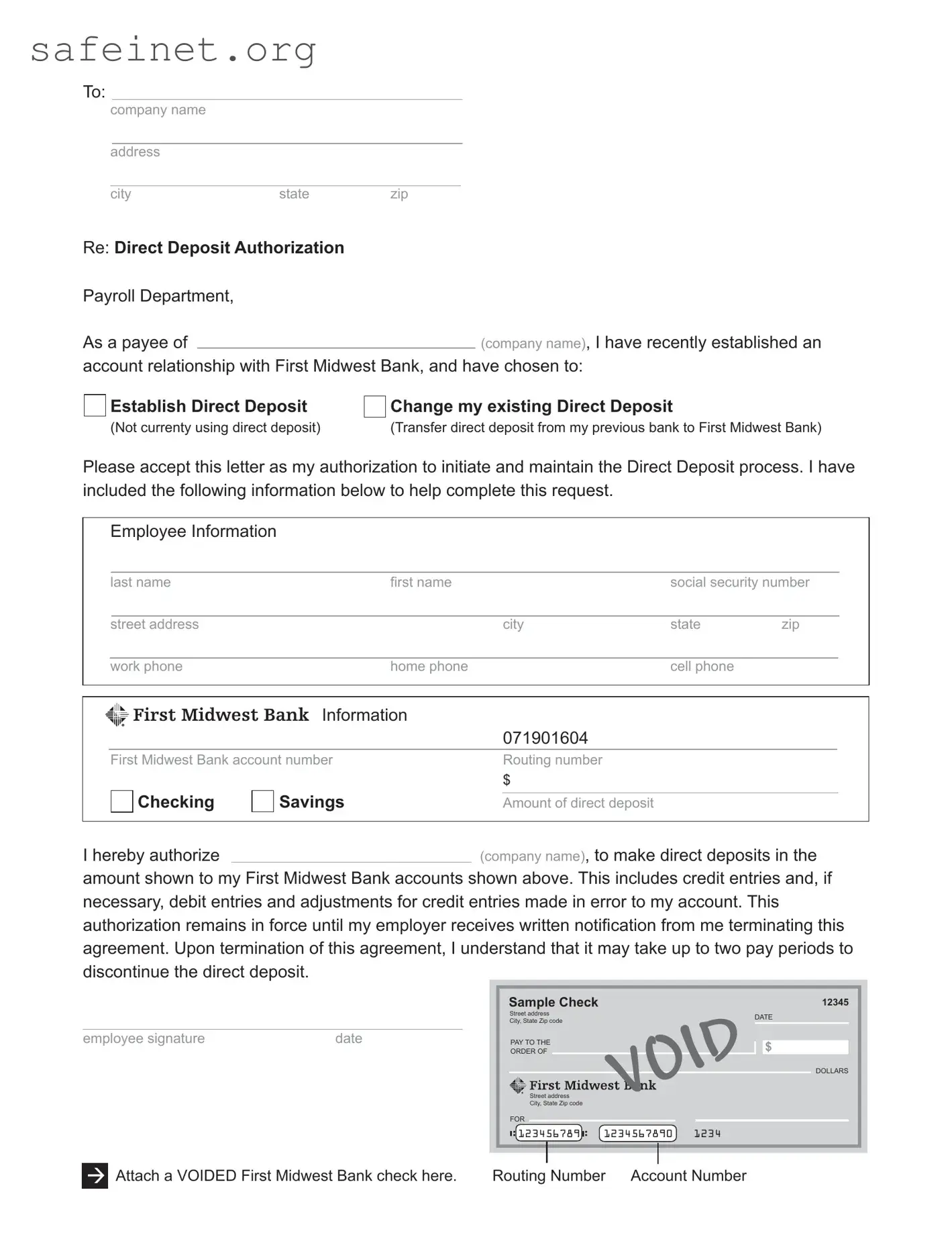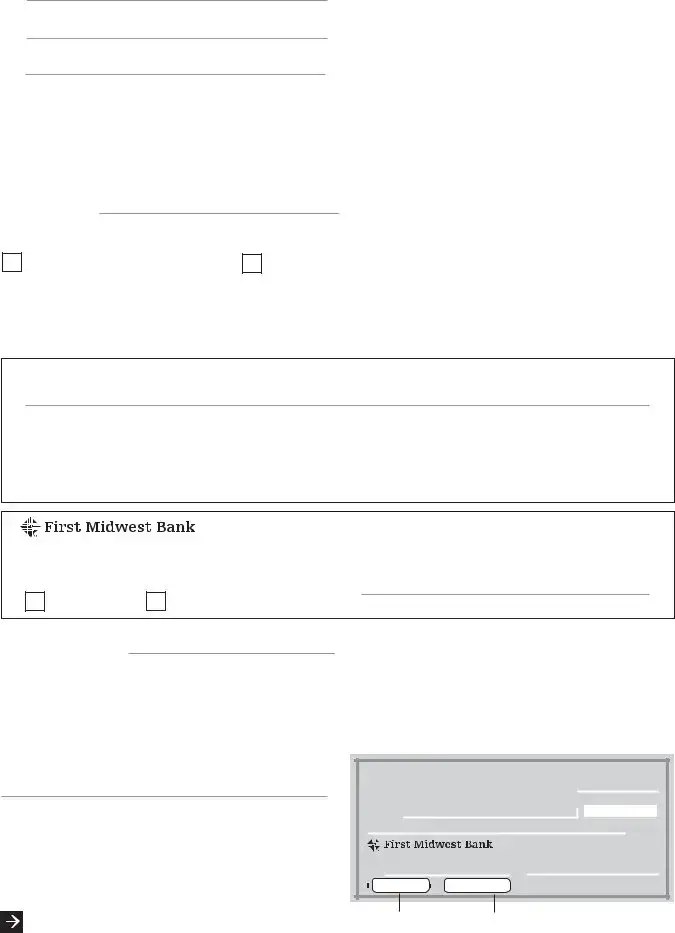The First Midwest Bank Direct Deposit form shares similarities with an auto loan application. Both documents require personal information such as name, address, and social security number. Additionally, each form requests banking details necessary for processing transactions, whether for deposits or loan payments. This ensures that funds can be transferred accurately and securely. Both forms serve the purpose of making financial processes more efficient, streamlining the communication between the individual and the financial institution.
Another document that resembles the Direct Deposit form is the W-4 form, also known as the Employee's Withholding Allowance Certificate. The W-4 form collects personal information and financial details to determine withholding allowances for federal income tax purposes. Like the Direct Deposit form, it requires the employee's current residential address and social security number. It aims to facilitate accurate financial transactions and ensure that the correct amount of taxes is withheld from an employee's paycheck.
The benefits enrollment form closely matches the Direct Deposit form in terms of information collection. This document is used during the hiring process or during open enrollment periods. It gathers personal details, such as name and contact information, and may even require banking information for direct deposit of benefits payments. Both documents have the common objective of ensuring that employees receive their funds efficiently and correctly members of the workforce often need to complete before receiving their compensation or benefits.
A payroll authorization form features similar attributes to the Direct Deposit form. This document often requires an employee's authorization for the employer to deduct certain amounts from their paycheck, whether for benefits or other deductions. Just as the Direct Deposit form allows for the initiation of bank transfers, the payroll authorization form gives the employer the go-ahead to manage finances effectively. Both forms act as essential communication tools between employees and employers regarding compensation matters.
The change of address form also shares characteristics with the Direct Deposit form. Individuals use this document to provide updated contact information for various services, including banking. Both require clear identification to ensure accuracy, and both serve the same purpose of keeping an individual's records current. Maintaining accurate information is crucial for effective communication and service delivery across multiple organizations.
A loan payment authorization form aligns closely with the Direct Deposit form, as it also authorizes the transfer of funds from one account to another. Similar to how direct deposit directs funds to an account, the loan payment form specifies the channels through which payments to a lender will occur. Essential personal information is required to validate the individual’s identity and facilitate financial transactions, ensuring that payments are made correctly and on time.
The tax direct debit form resembles the Direct Deposit form in its goal of enabling automatic transactions. Individuals authorize their financial institution to withdraw funds from their accounts for tax payments directly, ensuring timely payments of their tax obligations. Both forms require personal and banking information to facilitate these automated transactions, aimed at reducing the chances of late payments and related penalties.
The employee reimbursement form bears similarities to the Direct Deposit form regarding the need for financial transactions. It allows employees to request reimbursement for expenses incurred during work. Collecting personal and banking information on this form ensures that funds are delivered to the employee's specified account. Both forms streamline financial processes, making it easier for employees to receive their dues from their employers.

